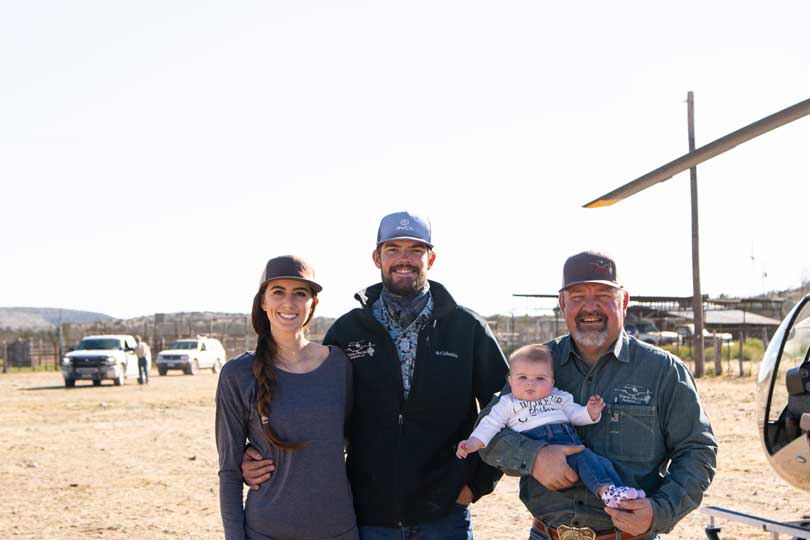By Jennifer Dorsett
Field Editor
Warren Cude follows the zigzag path of several feral hogs on the run, sights in, aims and fires. The helicopter he’s firing from swoops and dives, pursuing the invasive hogs.
This is no song and dance or a movie scene. It’s just another day of work for Warren and his son, Tanner, a helicopter pilot. They’re a new breed emerging in Far West Texas: aerial cowboys.
And these cowboys do more than hunt feral hogs.
Trans Pecos Aviation, the Cudes’ agricultural aviation venture, offers wildlife counts and livestock gathering in addition to predator control.
No day is ever the same. But the Cudes’ dedication is always there to help farmers and ranchers keep their crops and livestock safe and profitable.
Livestock gathering
Gathering livestock for vaccinations or to move them is challenging under any circumstances, but even more so in Far West Texas. The rocky, rugged landscape is beautiful to look at but extremely challenging to navigate.
With the Trans-Pecos area’s stocking rate at around one animal unit per 70 acres, most ranches are vast spreads stretching across varied terrain.
Horseback was traditionally the best way to work livestock in rough country. But time and money constraints paired with labor shortages have left many ranchers looking for other solutions.
“A man I work for was telling me right before they started using the helicopter, they were hiring 28 to 35 men to come out. There would be 400 cows in the pasture, and they’d get to the pen with eight of them,” Tanner said. “There’s just so many little nooks and crannies that they can get away from you in, or they’ll hide in the brush and you ride right past them.”
Using a helicopter for gathering changes all of that, cattle rancher DA Harral said. He recently hired Trans Pecos Aviation to bring in a herd of cows and calves for tagging and vaccinations.
“This is a lot different than the way we used to do it, but it’s a lot better,” Harral said. “What they’re rounding up are 10 and 20 square-mile pastures. And it’s hard to do that when you’re on horseback or four-wheelers. The number of cattle we brought in today in the short amount of time we did—it’s a lot more efficient and saves a whole lot of money.”
The Cudes gathered about 150 head of cattle in less than three hours. A task like that would usually take about four days using riders on horseback and all-terrain vehicles to gather a herd of that size. And that didn’t necessarily mean all the cattle were rounded up, either.
“Unquestionably, using the helicopter saved me money,” Harral said. “There were cattle we brought in today that hadn’t been in the pens in two years.”
Many new clients call specifically to ask about livestock herding.
Warren and Tanner are third- and fourth-generation ranchers from Fort Stockton. Warren said because Tanner grew up raising cattle and sheep, he innately knows how to handle the animals.
“I credit a lot of that to his reputation,” Warren said. “Because almost of all the new customers have said they were told from a prior customer how well he works livestock.”
Tanner said although there are many helicopter pilots in the U.S. offering similar services, many of them didn’t grow up in agriculture and don’t understand the herding behavior of cattle.
“It’s all about pressure, when to apply it and when to not apply it,” he explained. “A lot of times, what will end up happening is a pilot will start pushing on the livestock. They don’t know when to not push. If you start pushing on them hard, they get too hot. They’ll shrink (lose weight from heat and stress). Sometimes they might even die on you. And that’s just something growing up, doing it your whole life, you have that understanding for.”
Predator control
Not only do the Cudes know how to gather animals, but they know firsthand what predators can do to livestock. Warren said coyotes don’t get as much publicity as feral hogs, but they’re just as much of an issue for farmers and ranchers in Pecos County and the surrounding area.
Both predators can be deadly to smaller animals like sheep, goats, newborn calves and deer fawns.
“Back in the early 1900s and up to probably 20 years ago, this was primarily all sheep and goat country. As predators kept growing in numbers,

